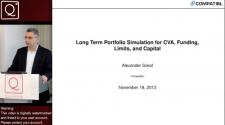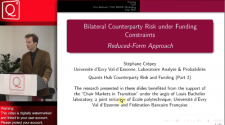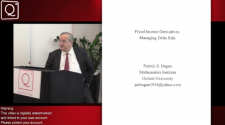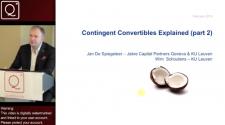Workshop view
Back to Shop
Treasury: Bank Strategic Asset-Liability Management
Bank Strategic Asset-Liability Management
Presenter: Professor Moorad Choudhry, Dept of Mathematical Sciences, Brunel University
Course Running Time: 5 Hours
Part 1 (Running Time: 41:05)
Part 2 (Running Time: 15:41)
Part 3 (Running Time: 30:54)
Part 4 (Running Time: 20:51)
Part 5 (Running Time: 1.00:08)
Part 6 (Running Time: 19:59)
Part 7 (Running Time: 41:38)
Part 8 (Running Time: 42:04)
Part 9 (Running Time: 12:44)
A high-level principles seminar for senior executives who work directly or indirectly with the ALM function and apply ALM principles at the CEO and ALCO level when determining bank strategy and risk management appetite.
Asset-liability management and liquidity management are the cornerstones of bank risk management. The premier executive challenge of the Basel III era is integrating these into bank strategy, such that they form an integrated part of every bank’s overall business model and drive customer engagement.
This advanced-level seminar is aimed at senior and experienced bankers and is of relevance to every member of a bank’s ALCO. It seeks to review key aspects of ALM and present the vital questions of how ALM, liquidity risk and ALCO governance should be set up and implemented at a bank. Delegates will be encouraged to critique different bank operating models and risk governance, with a view to determine collectively what represents business best-practice.
Key Features:
- Strategy and capital
- Capital structure and management
- ALM introduction and overview
- The risk management triumvirate: CFO, CRO and Treasury
- Treasury operating model
- NIM and NII: the ALM framework for the Banking Book
- Liquidity risk management and funding policy
- Funds transfer pricing and asset-liability origination
- Liabilities strategy formulation
- Credit rating agency considerations
- Bank yield curve and asset origination pricing
- Treasury input to strategy setting
- Corporate governance and ALCO
Workshop Content:
Strategy and capital
- Treatment of capital and reserves
- Concept of no free funding and no “capital income” for business lines
- Capital structure considerations
- ROC and RAROC
- Strategy setting within Basel III regime
Strategy setting
- Pre- and post-crash models
- Resource inputs
- Treasury input to strategy setting
Treasury operating model
- Business best-practice governance and org structure
Managing NIM
- Understanding net interest margin
- Issues in preserving NIM: holistic balance sheet view
Liquidity risk management
- The funding model: strategic principles
- Liquidity policy statement and statement of liquidity risk appetite
Funds transfer pricing and asset-liability origination
- Principles of internal funding
- Funding policies for each business line
- Correct FTP to ensure no disincentives in asset-liability raising
- Interaction with NIM
Liabilities strategy formulation
- The right funding model
- Optimum funding strategy
- Liabilities pricing and FTP
The yield curve
- Understanding inputs and outputs
- Interpolation model: not straight line!
Loan origination pricing: correct input parameters
- Reviewing elements of loan pricing
The liquid asset buffer
- Cash-securities mix
- Funding principles
- Portfolio selection for liquidity preservation not return
Managing interest rate risk in the Banking book
- Business best-practice approach to hedging IRR
- Hedging – not speculation!
Credit rating agency principles
- Factors in determining the credit rating
- Action when targeting a desired rating
Academic level
Topic
FinancePublished date
1 July 2014Price
£199.00Related workshops

Marco Bianchetti
Interest Rate Modelling: Modern Interest Rates with Collateral, Funding and Credit Risk (Part 1)
19 February 2014
Massimo Morini
Interest Rate Modelling: Modern Interest Rate Modelling with Collateral, Funding and Credit (Part 2)
4 March 2014





